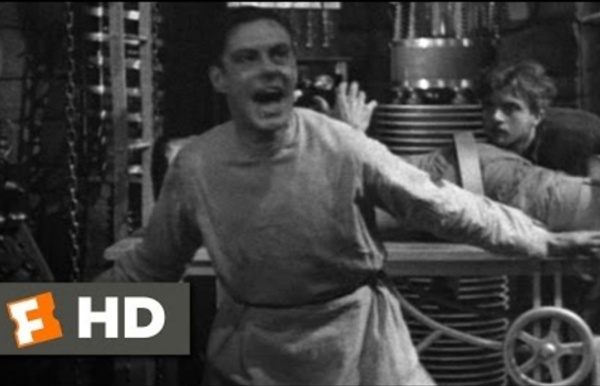



"Το ανατομείο και το σφαγείο με εφοδίασαν με πολλά... Transhumanisme : de l’illusion à l’imposture Si les technologies sur lesquelles se fondent les transhumanistes – biotechnologies, intelligence artificielle, neurosciences… – progressent à un rythme très rapide, les prédictions annoncées par ce mouvement ne seraient qu’illusoires et fantasmatiques selon les chercheurs Jean Mariani et Danièle Tritsch qui nous invitent à faire la part entre une « économie des promesses » et de réelles avancées scientifiques. Ce billet a été publié une première fois par le Huffpost, dans le cadre de la journée spéciale menée en partenariat avec le CNRS. Le transhumanisme est un mouvement qui, en s’appuyant sur les progrès de la biologie et de l’intelligence artificielle, défend l’idée de transformer ou dépasser l’homme pour créer un post-humain, ou un transhumain, aux capacités supérieures à celles des êtres actuels. Cette transformation s’envisage au niveau individuel, mais aussi collectif, conduisant alors à une humanité nouvelle. L’immortalité en bonne santé ne fait plus recette
portrait Mary shelley Inside Jeff Overturf's Head: "Frank N. Stein" - Will Elder - Mad Mondays! Harvey Kurtzman & Co.'s "Mad" the COMIC BOOK was showing no sign of slowing down as issue #8 hit the newstands in late 1953! Kurtzman's first story of the issue with able assist by the king of "chicken fat" hisself, Will Elder, was their take on the sci-fi/horror classic "Frankenstein". This has no shortage of the afformentioned "chicken fat" so grab a spoon and dig in! Only the fershlugginers at Mad could do a story of a Hitler-headed, bird-brained monster back from the dead in 1953. What? I didn't think so. Talk to you soon. Frankenstein 1994 η εννοιολογική μετατροπή της μακάβριας νεκροβίας (εκταφή,... Frankenstein 1931 Frankenstein in Baghdad, Ahmed Saadawi - The Big Issue About 16 months ago, I stood in what could have been a left luggage depot in Potocari near Srebrenica, surrounded by body parts in labelled plastic bags. Those bits of flesh and bones – a tibia here, a fibula there – were waiting for others from the same victim to be unearthed so a skeleton could be reassembled; so all the mothers who had lost their sons would have something tangible to mourn. Ahmed Saadawi’s grimly funny novel Frankenstein in Baghdad is set in the city in 2005 when it is occupied by the Americans, and draws on that same hunger for physical restoration. Car bombs are exploding and human remains are scattered across every square. Devastated by the death of his friend Nahem, Hadi, the junk dealer, starts picking up corporeal shrapnel and sewing it together to create a new being he christens Whatsitsname. His creature – the amalgamation of many innocent people – is brought to life by the restless soul of a murdered hotel security guard.
couverture en anglais du livre Frankenstein The Murder Act couverture en français du livre Fankenstein CABINET / Recollecting the Slaughterhouse Although abattoirs radically altered the spatiality of slaughter, they did not immediately alter the practice of butchering. While butchers could no longer slaughter in their own shops, once they were at the public slaughterhouse, where each received a separate work chamber, they could perform their bloody craft in relative privacy and according to their own traditions. In the 1820s, animals were killed and flayed much as they had been 50 years earlier: “a young bull is thrown down and his head is tied to the ground with a rope; a strong blow breaks his skull, a large knife gives it a deep wound in the throat; steaming blood spills out in big bursts along with the life... Bloody arms plunge into its steaming innards, a blowpipe inflates the expired animal and gives it a hideous shape, its legs are chopped off with a cleaver and cut up into pieces and at once the animal is stamped and marketed.”5 The entire act was performed by one or two specially trained men.
Αbbatoir το μοντέρνο σφαγείο During the nineteenth century, the close relationship...